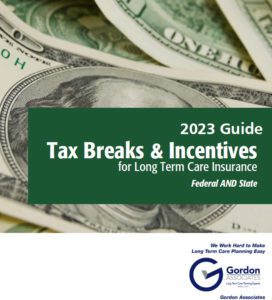Imagine that insurance is like a motorcycle. An insurance rider, then, is kind of like that side-car you can attach to that motorcycle (usually used to carry passengers or luggage). Put in a more straightforward way, an insurance “rider” is an additional (or optional) feature that is added to an already existing plan. That’s true when it comes to car insurance or Long Term Care Insurance (LTCI). However, LTCI riders have some interesting (and noteworthy) nuances and features that are worth examining.
In some cases, Long Term Care Insurance can itself be the rider. In other cases, riders may be attached to an otherwise full LTCI policy. Knowing the difference–and understanding how riders can impact your Long Term Care Insurance can help you plan for a better future. Riders can help ensure you get the policy you really need–but only if you take the time to choose the right ones.
Why Do Riders Exist?
Nearly 70% of those over the age of 65 will require at least some long term care in their lives. That makes the need for LTCI seem quite universal. However, the need isn’t the whole story.
That’s because everyone’s a little bit different–they have different goals, different finances, different health goals, and so on. LTCI riders provide you with some much needed flexibility–they present an easy way to add to or subtract from a policy in order to ensure it’s meeting your needs. Ultimately, riders can help you create a policy well suited to your situation and your future needs.
Types of LTCI Riders
In the field of Long Term Care Insurance, there are several common riders that are often added to LTCI policies.
Inflation Protection Rider
Even in today’s environment, the cost of long term care tends to rise faster than the rate of inflation. Left on its own, this could make your policy less effective in the future, as your budget won’t cover the care you’re expecting it to. This will significantly undermine the peace of mind you’re trying to achieve.
That’s why many plans will offer the option of an inflation protection rider. There are two primary forms of inflation protection riders:
- Simple: A simple protection rider will increase your policy payout by a set flat rate every year. For example, your payout might increase by a flat 3% every year. The idea is that this will help maintain the value of your policy.
- Compound: A compound inflation protection rider is very similar–except instead of increasing by a set amount every year, the interest compounds. This can lead to faster growth in the value of your policy and, ultimately, offer robust protection.
Choosing the inflation protection rider that’s best for you will depend on your situation, your goals, and your finances. (Typically, a compound inflation rider may incur more up front costs, with a larger payout over the long term–that may not be the ideal solution for all individuals.)
Hybrid Plans
Not all LTCI riders are those attached to traditional LTCI plans–sometimes they are LTCI plans. Or, to put it another way, one of the most common LTCI riders is Long Term Care Insurance itself. These are called hybrid plans. For many people, hybrid plans have become an exceptionally useful way to cover their possible future care. A hybrid plan is a life insurance plan that has an added Long Term Care Insurance rider. Essentially, if you don’t use your Long Term Care Insurance, the payout turns into a life insurance policy.
It’s a great way to make sure that the money you invest in your plan is used either way. This can be especially useful for those individuals who are concerned that they might not need long term care in their future. (These individuals are relatively uncommon, but they do happen–so it can make sense to cover all of your bases.)
Shared Care Rider
Long Term Care Insurance often (but not always) covers only one person. This makes it easier for insurance companies to assess risk and for consumers to select a plan that best suits their individual needs. But in some cases, it makes sense for married couples to share some of the risks, costs, and benefits.
This can be accomplished in several ways:
- Both individuals have their own policies and shared care riders are attached to each policy. Usually, this allows partners to split up benefits however they need to in order to cover care costs.
- Each individual has their own policy, and a third separate pool exists that either partner can use if necessary. This ensures each individual has their own benefits to rely on if the need arises.
There are other variations as well (for example, partners can sometimes purchase hybrid plans that will add a set number of years of benefits on to their policy). Not all of them involve riders, but many of them do.
You Can’t Take Advantage of Riders You Don’t Know About
LTCI riders are designed to make plans more effective based on your individual needs. But consumers, understandably, don’t always know about every possible rider that exists. That’s why it’s often a good idea to work with a financial planner or Long Term Care Insurance expert.
The experts at Gordon Associates Long Term Care Planning can walk you through all of your options and help you select the plan that works best for your goals. Contact us today to schedule an appointment!


 To help determine if long-term care (LTC) insurance is right for you, we are offering a FREE informational guide. This is a comprehensive booklet that will answer many of your questions about tax breaks and incentives for LTCI for federal and state taxes.
To help determine if long-term care (LTC) insurance is right for you, we are offering a FREE informational guide. This is a comprehensive booklet that will answer many of your questions about tax breaks and incentives for LTCI for federal and state taxes. To help determine if long-term care (LTC) insurance is right for you, we are offering a FREE informational guide. This is a comprehensive booklet that will answer many of your questions about LTC and assist you with your health care planning.
To help determine if long-term care (LTC) insurance is right for you, we are offering a FREE informational guide. This is a comprehensive booklet that will answer many of your questions about LTC and assist you with your health care planning.